Crank power meter vs. pedal power meter, which one is better?
In the market, we find different types of power meters, although the most popular ones currently are those installed in pedals or cranks. Let's see what the pros and cons of each one are.
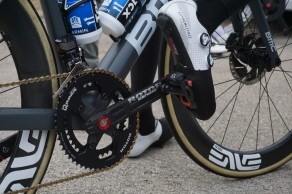
What type of power meter is better?
Training using power as a reference, something that just a few years ago was only within the reach of professional cyclists has become popular to the point that it is not unusual to see bikes on the road that include this component or cyclists talking about normalized, IF or power peaks.
The advantages of training precisely and regulating forces to the millimeter are useful even for cycle tourists who only seek to complete their routes without collapsing along the way.
RECOMENDADO

Complete list of the highest paid cyclists of 2025

How many calories are burned when cycling

What is heart rate variability and how does it affect the cyclist?

Change wheels if you want to transform your bike's behavior

What bike size do you need? Here's how to find out

How does age affect performance and recovery?
Currently, there are two philosophies of power meters on the market: those located in the bottom bracket, cranks or chainrings, and those that take advantage of the pedals to measure the force exerted. Other power meter systems have fallen into disuse, such as the famous Powertap hubs that started the democratization of this form of training or estimation systems that calculated power based on different parameters.

As a bit of culture, we remind you that power meters are based on electronic devices called strain gauges, which are small sheets that, when they undergo a deformation, vary their resistance to the passage of electric current more the greater the deformation.
Placed in various parts of the bike, they are able to detect the deformation that occurs in areas such as the bottom bracket axle, pedal axles, cranks or chainrings due to the force exerted by our legs when pedaling. Knowing the pair of forces that the legs apply and the speed of rotation, the cadence, we obtain as a result the power that we are transferring to the bike.
Pedal power meter
As we said, manufacturers have used various locations to capture the force exerted by the legs. Each of them has advantages and disadvantages that will make, depending on our needs, we opt for one type or another.
In the case of pedals, they are elements of reduced size. Therefore, to place a power meter on them everything has to be miniaturized to the maximum to achieve, on the one hand, that everything fits and secondly, to do so without affecting the parameters of the pedal such as the Q factor or the pedal height.
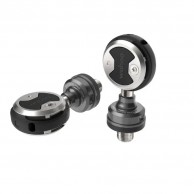 In this case, the strain gauges have to be very small and placed with much more precision, which can be a source of margin of error between models. Also, the electronics are very tight so the space for the battery that powers the system is also reduced so, in general, the autonomy will be less.
In this case, the strain gauges have to be very small and placed with much more precision, which can be a source of margin of error between models. Also, the electronics are very tight so the space for the battery that powers the system is also reduced so, in general, the autonomy will be less.
We also have to take into account that the pedals are a part of the bike that is exposed in case of a fall and, although it is not usual to break a pedal, the possibility is always there. Apart from being an external element, it also has to be more protected against rain and dirt.
However, they have a great advantage which is what makes it the system chosen by many: they can be changed from one bike to another in just a couple of minutes. Something essential if we want to enjoy power measurement on all our bikes since, although power meters have become cheaper, they still represent a considerable outlay.
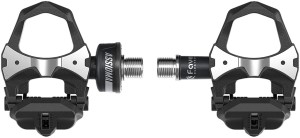 Another advantage is that they allow independent and non-interacting measurement of both legs, something useful for obtaining biomechanical performance data. There are also models that measure a single leg and calculate the resulting power by multiplying by 2. A much more economical option since one of the sides is a conventional pedal.
Another advantage is that they allow independent and non-interacting measurement of both legs, something useful for obtaining biomechanical performance data. There are also models that measure a single leg and calculate the resulting power by multiplying by 2. A much more economical option since one of the sides is a conventional pedal.
The offer of this type of power meters is varied: Garmin Vector 3, Favero Assioma, Wahoo Speedplay Powrlink Zero or Look Exakt are some examples.
Power meter in the cranks
This type of meter is associated with elements that are not usually mounted and dismounted from the bike easily so we will choose one of them if we have a single bike or we can make the outlay to have more meters in our other companions.
As an advantage over the pedals, it is a system that is, in general, more protected against falls and blows although, as we will see, it is not exempt from suffering the inclement weather. We have options for all tastes, from those that measure a single leg to those that provide us with an independent measurement of each one or, the most common ones that only offer us the resulting value of the power that the legs generate.
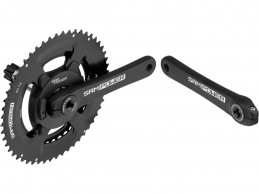 Among the power meters that are located in the bottom bracket area, we also find several types. On the one hand, there are the external ones that usually consist of a kind of pill adhered to the inner face of the crank and that contains the strain gauges, the electronics and a small button cell as power.
Among the power meters that are located in the bottom bracket area, we also find several types. On the one hand, there are the external ones that usually consist of a kind of pill adhered to the inner face of the crank and that contains the strain gauges, the electronics and a small button cell as power.
This type of power meter is generally more economical although it has the disadvantage of not being compatible with all combinations of crank and frame if the space between these two elements is reduced. Also, being an external element we have to trust in the good sealing of the units to guarantee good protection against water and dirt.
As an example of these power meters, we can cite some of the most popular ones like 4iii, Stages.
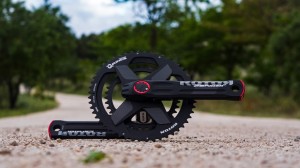
However, the most common ones are those that measure the deformation in the area of the spider or in the crankshaft. In general, this type of meter does not provide us with a differentiated reading of each leg but gives us the total value of the power that our legs are generating. In most cases, they are compatible with all types of bikes and the housings that house the electronics and batteries are very protected, although none like the INpower from Rotor that carries all the electronics inside the bottom bracket axle.
Here we find a wide range of models, for example, the mentioned ones from Rotor, the Quarq from SRAM or the Dura-Ace power meter from Shimano. Power2Max, SRM, although, being the most elaborate, their price is also higher than average.
In summary, we would choose the pedals if we had several bikes and the need to have power measurement on all of them. However, the power meters that are located in the cranks are generally more protected, ensuring that this component will last us much longer.